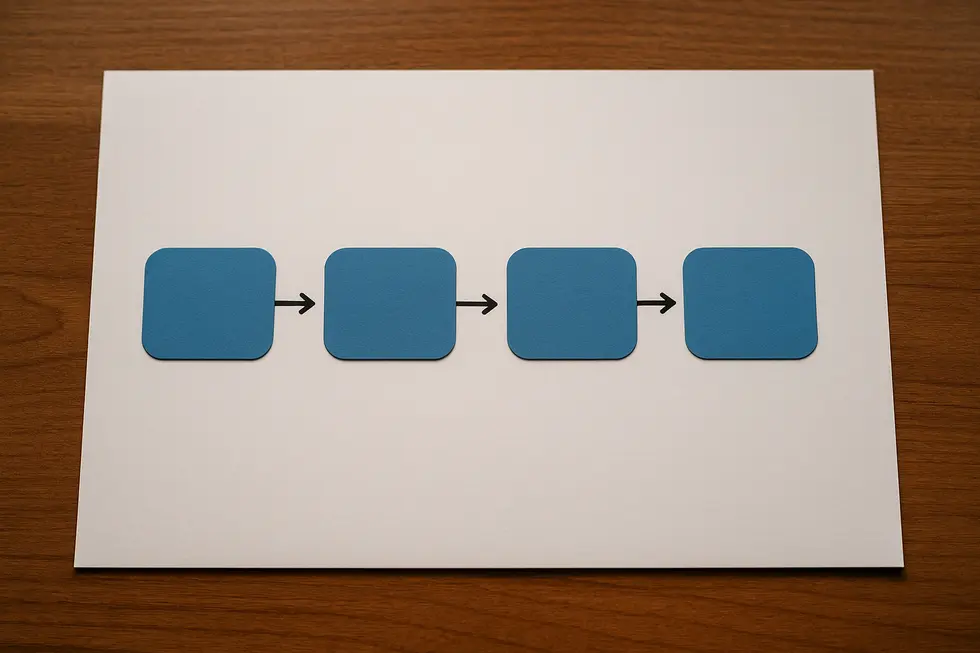Introduction
Retrieval-Augmented Generation (RAG) has emerged as a powerful tool by bridging the gap between static language models and dynamic information retrieval. As developers seek more accurate and context-sensitive AI solutions, understanding RAG’s evolution becomes crucial. From its historical roots in information retrieval systems of the 1970s to its sophisticated modern implementations, RAG has evolved into a critical component in AI development. This article explores the evolution of RAG through five key chapters: Starting with historical foundations, advancing into the core pipeline development, it further delves into the strides made in context-aware intelligence. The discussion progresses to modular architectures that enhance scalability, concluding with insights into cache-augmented generation as the cutting-edge frontier. Each chapter weaves into a comprehensive narrative that aids developers in leveraging RAG’s full potential.
Table of Contents
Chapter 1: Historical Foundations and the Emergence of RAG
- The Technological Genesis of RAG: Bridging History with Modern Innovation
- Economic Transformations: The Ascendancy of RAG
- Geopolitical Power Shifts: The Role of RAG in Historical Foundations
- Societal Transformations Through the Lens of RAG Innovation
- Revolutionizing Evaluation: Tracing the Evolution and Benchmarks in RAG Systems
Chapter 2: Core Pipeline Development in Retrieval-Augmented Generation (RAG)
- Innovative Indexing: Pioneering the Core of RAG Development
- Advancing the Retrieval Pipeline: Dynamic Query Processing and Optimization
- Enhancing Generation: Contextual Precision and Refined Output in RAG Pipelines
- The Synergistic Fusion: Leveraging Embeddings and Keywords in RAG Pipelines
- Harnessing Feedback and Caching: The Backbone of Efficient RAG Pipelines
Chapter 3: Advancements in Context-Aware Intelligence in RAG
- Transformative Power of Next-Gen NLP in RAG Contextual Intelligence
- Seamless Multimodal Fusion for Enhanced RAG Capabilities
- Autonomous Agency: Transforming Contextual Understanding in RAG
- Catalysts of Innovation: Context-Aware Intelligence in Domain-Specific RAG Applications
- Harnessing Quantum Computing for Next-Gen RAG Intelligence
Chapter 4: Exploring Component Decoupling in RAG Systems
- Achieving Scalability Through Decoupled Modular Designs
- Harnessing Distributed Indexing for Scalable Retrieval-Augmented Generation
- Optimizing Resources in Agile RAG Frameworks
- Seamlessly Integrating Multi-Modal Data in Modular RAG Architectures
- Ensuring Consistency: Monitoring Performance in Scalable RAG Frameworks
Chapter 5: Cache-Augmented Generation: The Frontier of RAG Evolution
- The Intricacies of Cache-Augmented Generation: Unpacking RAG’s Next Leap
- Efficiency Redefined: The Superiority of Cache-Augmented Generation
- Navigating the Constraints: Limitations of Cache-Augmented Generation
- Navigating the Dual Challenges of Security and Scalability in the RAG Landscape
- Transformative Pre-computation: Latency Reduction in Cache-Augmented Generation
Chapter 1: Historical Foundations and the Emergence of RAG

1. The Technological Genesis of RAG: Bridging History with Modern Innovation
The roots of Retrieval-Augmented Generation (RAG) date back to 1970s question-answering systems, which sought to blend retrieval with basic generation, though they lacked today’s capabilities. The modern RAG era resolved limitations in large language models by integrating retrieval mechanisms with transformer-based generators, enabling real-time access to external knowledge bases. Key innovations such as vector-based similarity search and efficient indexing transformed AI products by making responses context-aware and grounded in contemporary information source.
2. Economic Transformations: The Ascendancy of RAG
RAG’s integration into enterprise technologies is revolutionizing sectors like finance and healthcare. By enhancing compliance processes such as KYC and AML, RAG reduces operational expenses while boosting efficiency. The projected market growth at a CAGR of 45.8% signifies significant economic impact, reflecting a shift towards data-driven precision. As adoption expands across industries, RAG promises to redefine operational paradigms and economic strategies. For further insights, explore the economic impacts of RAG.
3. Geopolitical Power Shifts: The Role of RAG in Historical Foundations
Geopolitical considerations are pivotal in understanding RAG’s historical foundations. RAG helps synthesize vast data, illuminating how political dynamics shape technology evolution. For example, RAG analyzed the Harvard Iranian Oral History Project, revealing insights into Iran’s governance. This tool’s geopolitical impact extends to sectors like finance, where it refines data analysis, influencing global economic strategies. Explore further
4. Societal Transformations Through the Lens of RAG Innovation
The revolution instigated by Retrieval-Augmented Generation (RAG) marks a pivotal societal shift. By combining retrieval and generation, RAG has improved factual accuracy, essential in fields like healthcare and legal services. This approach brings real-time data into AI systems, enhancing transparency and reliability. However, with these advancements come challenges, such as potential security risks. As RAG integrates further into various domains, its effect on safety protocols and information trustworthiness will continue to evolve. For deeper insights, explore more about RAG’s impact.
5. Revolutionizing Evaluation: Tracing the Evolution and Benchmarks in RAG Systems
In the evolution of Retrieval-Augmented Generation (RAG), evaluation methods transformed significantly. Traditional systems evaluated retrieval and generation separately, ignoring interplay. The integration of RAG demanded innovative frameworks that account for the dynamic use of external data. Modern approaches include answerability detection, context-grounding verification, and safety alignment, providing a robust method to validate RAG’s adaptive processes. For further details, explore Azure AI Search’s comprehensive implementations.
Chapter 2: Core Pipeline Development in Retrieval-Augmented Generation (RAG)

1. Innovative Indexing: Pioneering the Core of RAG Development
Retrieval-Augmented Generation (RAG) fundamentally relies on robust indexing to enhance large language models. The sophisticated indexing pipeline converts data into vector embeddings for seamless querying, crucial to providing accurate responses. This pipeline faces challenges such as scalably handling vast datasets and maintaining data quality. Proper integration with the retrieval process and ensuring compliance are essential. For more insights, explore the depths of RAG.
2. Advancing the Retrieval Pipeline: Dynamic Query Processing and Optimization
In the core development of RAG, the retrieval pipeline is pivotal, advancing through dynamic query processing and optimization. This innovation aims to harmonize relevance, efficiency, and context sustainability. Query understanding has progressed significantly as LLMs now transform vague inputs into structured forms by generating clarifying questions. In various hybrid approaches, query alignment has been enhanced through systems like RAPTOR. By hierarchically clustering document chunks, RAPTOR facilitates multi-level abstraction, ensuring effective retrieval. Furthermore, adaptive indexing and real-time feedback loops have enriched pipeline responsiveness, allowing RAG to effectively confront domain-specific linguistic intricacies, thereby enhancing scalability and accuracy. For more on the influence of RAPTOR, visit Interactive Debugging for Retrieval-Augmented Generation Pipelines.
3. Enhancing Generation: Contextual Precision and Refined Output in RAG Pipelines
In the evolution of Retrieval-Augmented Generation (RAG), the generation pipeline has become crucial for ensuring accuracy and relevancy. Through context integration, retrieved data is woven with original queries, forming precise prompts that guide Large Language Models in crafting responses. The aim is not just relevance, but enhanced quality, achieved by techniques like spell checking and re-ranking strategies, refining outputs to meet high standards while maintaining engaging discourse. Continuous innovation in RAG systems will focus on efficiency and customization, pivotal for broad adoption. Read more about RAG delivery.
4. The Synergistic Fusion: Leveraging Embeddings and Keywords in RAG Pipelines
The evolution of Retrieval-Augmented Generation (RAG) pipelines hinges on hybrid approaches combining keyword-based methods with neural embeddings. Traditional TF-IDF techniques facilitate quick retrieval by word frequency, while embeddings discern semantic relationships across contexts. Max Marginal Relevance, a notable hybrid technique, balances query relevance with diversity, thus enriching context integration. These methods navigate the delicate trade-offs between domain specificity and semantic breadth, optimizing the RAG pipeline’s efficiency for dynamic enterprise demands. For more insights, check mastering retrieval-augmented generation.
5. Harnessing Feedback and Caching: The Backbone of Efficient RAG Pipelines
Efficient Retrieval-Augmented Generation (RAG) pipelines thrive on robust feedback loops and strategic caching implementations. Feedback mechanisms, such as user insights and hybrid relevance scoring, continuously refine retrieval accuracy. Simultaneously, caching strategies optimize performance by reusing results for common queries. By integrating feedback and caching, RAG systems balance computational efficiency with real-time updates, critical for adapting to dynamic data environments. For more insights, explore retrieval-augmented generation insights.
Chapter 3: Advancements in Context-Aware Intelligence in RAG

1. Transformative Power of Next-Gen NLP in RAG Contextual Intelligence
The evolution of next-generation NLP models substantially enhances context-aware intelligence by seamlessly integrating real-time data with Retrieval-Augmented Generation (RAG). These models dynamically update, ensuring responses are accurate and timely. By leveraging sparse expertise, they optimize efficiency, targeting specific tasks with specialized components. Enterprise workflow integration magnifies their impact, particularly in decision-making and customer service. This refinement in context-driven AI advances the practical application of RAG systems across diverse sectors. For further exploration, visit here.
2. Seamless Multimodal Fusion for Enhanced RAG Capabilities
Recent strides in Retrieval-Augmented Generation (RAG) underscore the transformative potential of hierarchical multi-agent architectures like HM-RAG. This paradigm orchestrates multimodal data integration through a structured framework involving Decomposition, Multi-source Retrieval, and Decision Agents. Such an approach ensures semantic consistency across diverse data forms and improves accuracy, as evidenced by a notable 12.95% boost in ScienceQA performance1. Modern RAG systems dynamically incorporate NLP updates to maintain relevance and governance, empowering applications in fields like healthcare and personalized education2.
3. Autonomous Agency: Transforming Contextual Understanding in RAG
Agentic RAG architectures have revolutionized retrieval-augmented generation by infusing autonomous AI agents into its processes. These architectures refine context-aware intelligence through adaptive retrieval strategies that dynamically shift based on query intent, autonomous task decomposition to handle complex inquiries via specialized agents, and real-time system optimization that incorporates user feedback for continuous improvement. This approach enables seamless handling of open-ended questions, enhancing accuracy and efficiency in diverse domains while reducing human oversight.
4. Catalysts of Innovation: Context-Aware Intelligence in Domain-Specific RAG Applications
Banking & Finance: RAG transforms financial advisory and fraud detection, integrating live market data for personalized strategies and enhancing anomaly detection by referencing historical transaction patterns. In Insurance, RAG automates document retrieval, improves risk assessments by synthesizing market data and regulations. Healthcare uses RAG for accessing protocols during consultations, whereas the Legal Industry benefits from streamlined case law research. Broader advancements are explored here.
5. Harnessing Quantum Computing for Next-Gen RAG Intelligence
To overcome computational constraints, quantum computing integrates seamlessly with context-aware Retrieval-Augmented Generation (RAG) systems, enhancing real-time analysis and probabilistic reasoning. By leveraging the unique parallelism of quantum processors, RAG systems achieve faster data retrieval and more adaptive responses—vital for complex applications like adaptive diagnostics and threat modeling. Quantum AI Transforming Machine Learning underscores these breakthroughs, paving the way for scalable and efficient AI solutions.
Chapter 4: Exploring Component Decoupling in RAG Systems

1. Achieving Scalability Through Decoupled Modular Designs
Component decoupling in modular architectures is pivotal for enhancing scalability in Retrieval-Augmented Generation (RAG) systems. This approach allows developers to modify or replace components independently, which is crucial for maintaining system integrity as they evolve. Techniques like dependency injection and the use of interfaces minimize interdependencies. Such architectures support ongoing innovation and responsiveness to user needs. For further insights into pipeline modularity, consider exploring additional resources.
2. Harnessing Distributed Indexing for Scalable Retrieval-Augmented Generation
In the evolution of Retrieval-Augmented Generation (RAG) systems, distributed indexing has emerged as a pivotal component for scalability. By partitioning data across multiple nodes, distributed indexing reduces latency and distributes computational load effectively. Tools like TiDB dynamically scale resources, supporting expansive data handling (source). Pairing with approximate nearest neighbor algorithms and caching boosts speed and accuracy. Observability tools monitor key metrics ensuring robust performance under heavy use. For more insights, explore AI automation techniques.
3. Optimizing Resources in Agile RAG Frameworks
In modular RAG architectures, independent resource allocation allows for specialized scaling of components. Though retrieval and generation functionalities require distinct computational assets, they can independently adjust to fluctuating demands. Service-oriented designs enable scalability without system disruption, fostering efficiency across evolving enterprise landscapes. This flexibility is vital for meeting diverse operational needs, ensuring robust application performance in dynamic query environments. Source
4. Seamlessly Integrating Multi-Modal Data in Modular RAG Architectures
Modular Retrieval-Augmented Generation (RAG) systems leverage specialized architectures to integrate multiple data modalities, seamlessly handling text, images, and structured data. Key components like unified embedding spaces utilize models such as CLIP to enable cross-modal comparisons, transforming diverse data types into comparable vector forms. Modality grounding through vision-language models simplifies processing by converting images into text, facilitating a consistent text-centric framework for downstream tasks. Meanwhile, multi-agent collaboration orchestrates complex tasks. Hierarchical agent models parse queries into sub-tasks, concurrently searching across various databases. Utilizing frameworks like HM-RAG enhances cross-modal synthesis accuracy by integrating insights from diverse modalities HM-RAG Architecture. These designs ensure high flexibility and data integrity maintenance during analysis, demonstrating real-time adaptability crucial for scalable applications.
5. Ensuring Consistency: Monitoring Performance in Scalable RAG Frameworks
Effective performance consistency in scalable RAG frameworks hinges on observability, evaluation metrics, and modular architecture. Tools like Opik offer trace monitoring that highlights latency issues in generation phases, while systems such as RAGAS provide metrics for retrieval and generation accuracy, promoting improved reliability. Modular architectures allow component flexibility, ensuring seamless integration and scalability without sacrificing monitoring effectiveness. Insights from RAG Blueprint underscore the importance of adaptable yet well-monitored systems.
Chapter 5: Cache-Augmented Generation: The Frontier of RAG Evolution

1. The Intricacies of Cache-Augmented Generation: Unpacking RAG’s Next Leap
Cache-Augmented Generation (CAG) represents a strategic shift in the integration of external knowledge within large language models. Unlike its predecessor, CAG capitalizes on the expanded context abilities of modern LLMs by preloading requisite information upfront. This offline cache preparation streamlines processes by embedding key-value caches alongside semantic matches, thereby enabling efficient runtime execution. The technique significantly reduces latency and enhances cost efficiency by reusing cached computations. However, it requires predetermined knowledge boundaries, posing challenges for rapid data changes. For a deeper comparison of methods, consider Retrieval Augmented Generation vs. Cache.
2. Efficiency Redefined: The Superiority of Cache-Augmented Generation
Cache-Augmented Generation (CAG) redefines the efficiency of Retrieval-Augmented Generation (RAG) by leveraging preloaded knowledge caches. This innovation results in reduced latency, offering near-instant responses ideal for real-time applications. Moreover, CAG’s simplified architecture minimizes system complexities, enhancing robustness and consistency by addressing queries against fixed repositories. Cost efficiency is another hallmark; while traditional RAG incurs ongoing retrieval expenses, CAG spreads costs through one-time cache setups, making it advantageous for businesses handling static data applications. Learn more about RAG vs. CAG.
3. Navigating the Constraints: Limitations of Cache-Augmented Generation
Cache-Augmented Generation (CAG) aims to enhance the efficiency of Retrieval-Augmented Generation (RAG) by preloading knowledge, reducing latency. However, it presents critical limitations like efficient cache management, difficulties scaling with dynamic knowledge, and reliance on potentially outdated information. Advances in dynamic cache management systems and periodic updates could mitigate these issues, enabling CAG to handle evolving data landscapes effectively. For insights into RAG applications, visit this resource.
4. Navigating the Dual Challenges of Security and Scalability in the RAG Landscape
In the evolving landscape of Retrieval-Augmented Generation (RAG), security and scalability emerge as pivotal challenges. Ensuring document-level access control complicates enterprise integration, demanding robust authentication systems to safeguard sensitive data. Meanwhile, handling vast data efficiently necessitates scalable solutions like DRAG, distributing computational burdens across networks. This innovative approach mitigates privacy risks and enhances performance. Learn more about secure retrieval-augmented generation in enterprise contexts here.
5. Transformative Pre-computation: Latency Reduction in Cache-Augmented Generation
Cache-Augmented Generation (CAG) transforms language models by integrating precomputed key-value caches. By loading entire data sets into context windows, CAG eliminates retrieval time delays, offering instant access to information. This strategy leverages large language models’ capabilities, storing encoded documents in GPU memory to enhance efficiency. This reduces the latency, particularly for repeated queries, but depends on context window sizes, requiring smart caching strategies. Learn more about these innovations here.
Final thoughts
The evolution of Retrieval-Augmented Generation (RAG) highlights its transformative impact on AI development. By understanding its historical roots and exploring key advancements, developers can leverage RAG to build smarter and more responsive systems. The journey from foundational methodologies to cutting-edge innovations like cache-augmented generation showcases RAG’s potential to enhance scalability, accuracy, and efficiency in AI applications.
Ready to elevate your business with cutting-edge automation? Contact AI Automation Pro Agency today and let our expert team guide you to streamlined success with n8n and AI-driven solutions!
About us
AI Automation Pro Agency is a forward-thinking consulting firm specializing in n8n workflow automation and AI-driven solutions. Our team of experts is dedicated to empowering businesses by streamlining processes, reducing operational inefficiencies, and accelerating digital transformation. By leveraging the flexibility of the open-source n8n platform alongside advanced AI technologies, we deliver tailored strategies that drive innovation and unlock new growth opportunities. Whether you’re looking to automate routine tasks or integrate complex systems, AI Automation Pro Agency provides the expert guidance you need to stay ahead in today’s rapidly evolving digital landscape.





